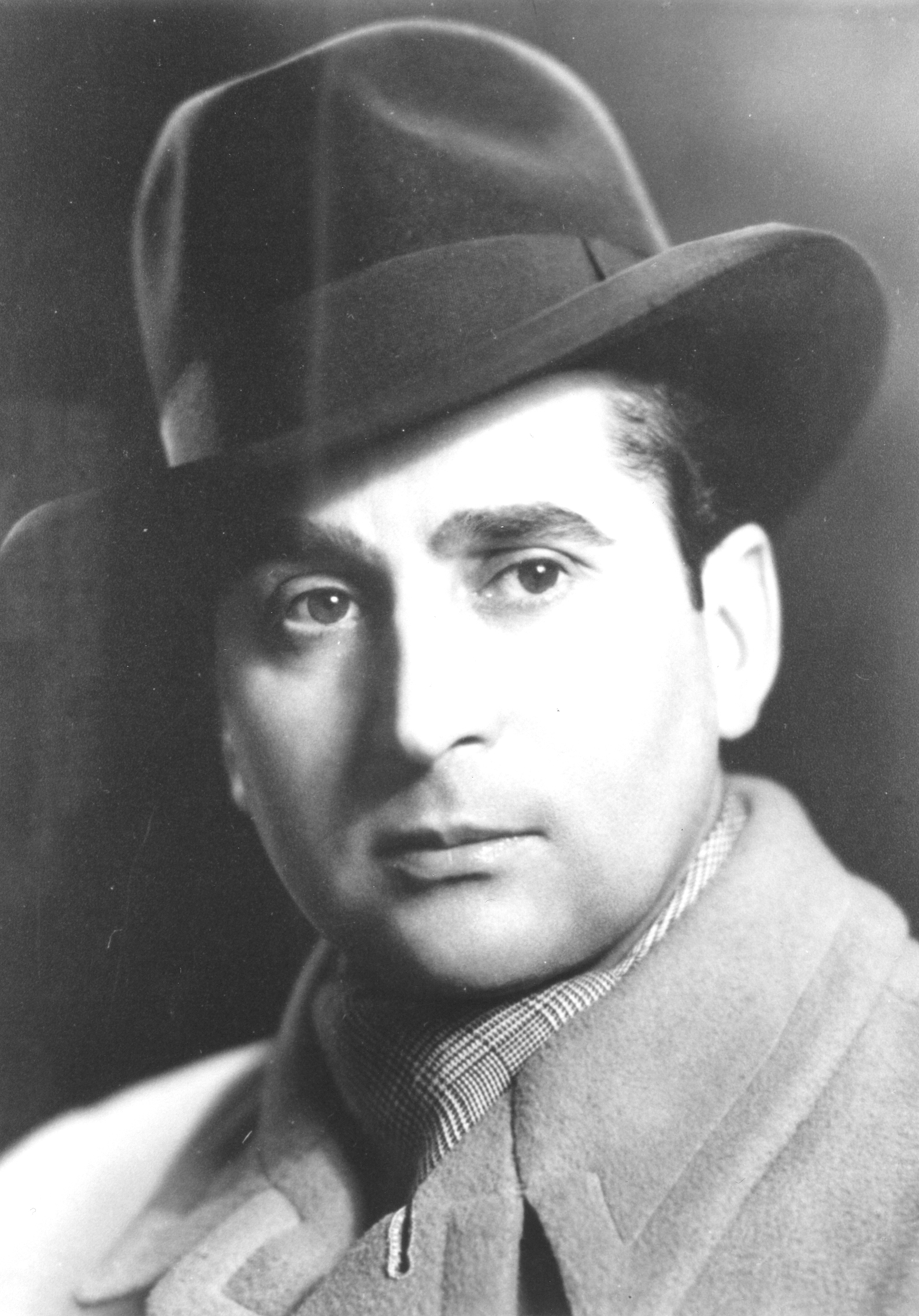In Neckarelz, a satellite camp of the Natzweiler-Struthof concentration camp, at least 90 Sinti and Roma inmates were forced to perform extremely hard Forced Labour from spring 1944.
Establishment of the Camp
The satellite camp in Neckarelz, today a district of Mosbach in Baden-Württemberg, Germany, was set up in the building of a primary school on 16 March 1944; it was intended to hold up to 1,000 inmates. The background to this was the planned relocation of the Daimler-Benz aircraft engine plant from Genshagen (near Ludwigsfelde south of Berlin) to the underground gypsum mine near Obrigheim am Neckar (code name ‘Goldfisch’) to avoid Allied bombing raids. The construction project (code name ‘A8’) was the responsibility of SS-Gruppenführer Hans Kammler (1901–1945), head of Office Group C (Construction) of the SS Main Economic and Administrative Office.
Operation of the Camp
The inmates had been transferred to provide slave labour for the construction of the underground factory on the site near the Neckar River. They had to lay the concrete foundations for the machines, dig out shafts, remove rock in lorries and haul building materials, construct underground factory halls and install the infrastructure, erect buildings and provide barracks for thousands of Daimler-Benz workers (mainly forced labourers).
In order to accommodate a maximum of 3,200 prisoners, further satellite camps were opened: the Neckargerach (on 26 April 1944) and Neckarelz II (on 23 July 1944) barrack camps and, in autumn, two smaller barrack construction detachments in Asbach and Neckarbischofsheim as well as a small SS (Schutzstaffel) service camp in Bad Rappenau.
Over 5,200 prisoners from almost every country in Europe were transferred there from Dachau, Natzweiler and its satellite camps, Groß-Rosen, Sachsenhausen and Stutthof concentration camps. Of these, around 275 died in the satellite camp complex on the Neckar and at least 1,000 more who were transferred, evacuated or liberated from the camps were dead by the end of 1945.
Sinti and Roma
Of the 89 Sinti and Roma who had been transferred from the main Auschwitz camp to Natzweiler on 12 December 1943 for typhus vaccine experiments, 79 were transferred to the Neckarelz satellite camp in the second half of April 1944. In addition, at least eleven prisoners categorised as ‘Gypsies’ arrived on other transports, including the ballet dancer and later actor Peter Böhmer (1923–2011). There were probably also a few Sinti or Roma among inmates categorised as ‘asocial’. Of the Sinti and Roma known by name, 72 were registered with German or Austrian nationality or as stateless, eleven as Czechs, four as Poles, two as Soviet citizens and one as a Latvian.
Sinti and Roma were therefore a small group within the inmate society and, like the other inmates, had to carry out mainly heavy construction, excavation and mining work under the supervision of construction companies. As the exploitation of the prisoners’ labour was the main focus at this time, the racially persecuted Sinti and Roma in the Neckar camp complex suffered no disadvantages compared to their fellow prisoners. None of them died in the Neckar camps themselves.
As almost all of them were German-speaking, few of them took up positions of responsibility: However, as ‘Kapos’, who had to drive their fellow prisoners to work and punish them, they inevitably also contributed to a negative view of the prisoner group. One Sinto was even once forced to perform the duties of an executioner.
Around 20 Sinti and Roma were transferred early from the Neckar camps to other camps, and at least seven of them did not survive. For example, August Schmidt (1926–1945) died after being transferred to the Vaihingen infirmary camp, another satellite camp of Natzweiler. At least four of them had previously attempted to escape from the Neckar camps, in acts of self-assertion that also depended on mutual support. These were Adalbert Eckstein (1924–1944), Rudolf Guttenberger (born 1921), Willy Herzberg (born 1921) and Franz Hauer (born 1922). They and three other Sinti were then transferred back to the main camp in Natzweiler, where they were subjected to phosgene gas experiments. Eckstein and Josef Reinhardt (1913–1944) died agonisingly of lung burns. Julius Strauß (1922–2006) also reported that mustard gas experiments were carried out on him in Natzweiler.
Vinzenz Rose (1908–1996) made a successful escape attempt. He was smuggled out of the camp on 30 August 1944 with the help of his brother Oskar Rose (1906–1968).

Vinzenz Rose (1908–1996), Überlebender des Konzentrations- und Vernichtungslagers Auschwitz-Birkenau und von Medizinverbrechen im Konzentrationslager Natzweiler. Als Vinzenz Rose 1943 nach Auschwitz deportiert wurde, hatte er sich bereits mehrere Jahre erfolgreich dem Zugriff der Geheimen Staatspolizei (Gestapo) entziehen können. Sein Vater und sein zweijähriges Kind starben in Auschwitz, die Mutter später in Ravensbrück.
Von Auschwitz-Birkenau wurde er zusammen mit anderen Sinti und Roma nach Natzweiler überstellt. Dort wurde er für Fleckfieberversuche missbraucht. Im April 1944 gelangte er in nach Neckarelz, einem Außenlager von Natzweiler. Sein Bruder Oskar Rose (1906–1968), der der Deportation entgangen war und sich unter falschem Namen im nahegelegenen Heidelberg versteckt hielt, organisierte von außen unter sehr riskanten Umständen die Flucht von Vinzenz Rose, die am 30. August 1944 gelang.
Vinzenz und Oskar Rose waren nach 1945 Wegbereiter der Bürgerrechtsbewegung der deutschen Sinti und Roma.
Fotograf:in: unbekannt
Dokumentations- und Kulturzentrum Deutscher Sinti und Roma, Heidelberg
War’s End and Liberation
When the Neckar camps were disbanded at the end of March 1945, over 2,000 prisoners were driven on an evacuation march to Dachau concentration camp. They included 64 Sinti and Roma, all of whom were presumably liberated. Gerhard Adam (born 1920) managed to escape near Schwäbisch Hall during the march.
Probably six Sinti were on a transport train for 900 sick people, which did not make it through to Dachau, and were liberated near Osterburken, around 30 kilometres from Neckarelz. However, one of those liberated, Karl Walter Bernhardt (1919–1945), died three weeks later in Mosbach.
The Neckarelz concentration camp memorial, which has existed since 1998 and opened in a new building in 2011, commemorates the Sinti and Roma prisoner group with the biography of Sylvester Lampert (1921–1999), among others.




